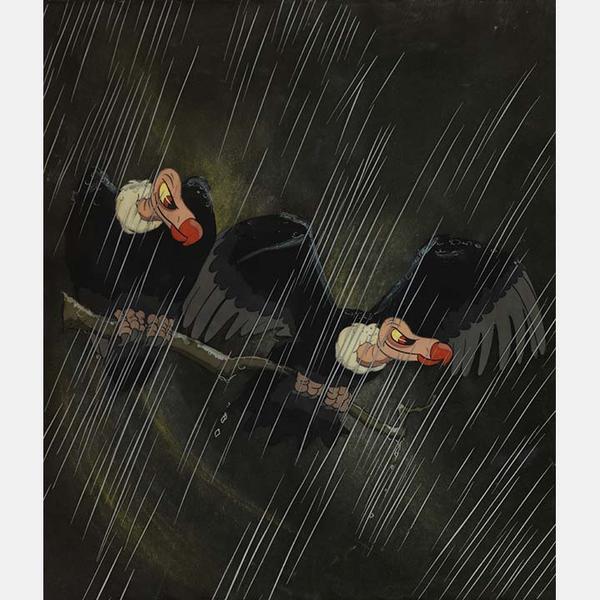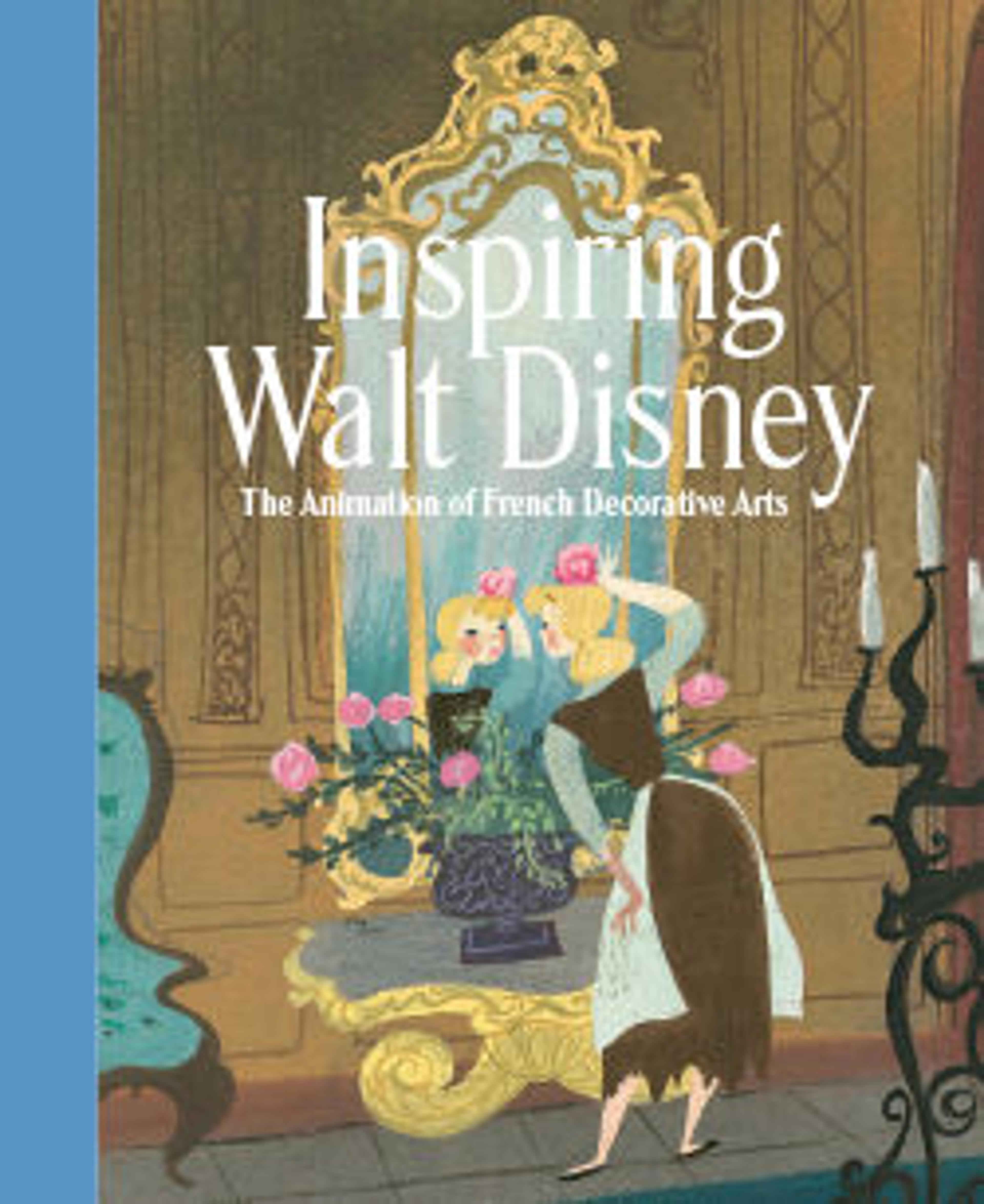The Vultures
Artwork Details
- Title:The Vultures
- Artist:Walt Disney Studios (American, established 1923)
- Date:ca. 1937
- Medium:Gouache on two layers of celluloid over watercolor and gouache background
- Dimensions:Sheet: 10 1/16 in. × 9 in. (25.5 × 22.8 cm)
- Classification:Celluloid
- Credit Line:Gift of the artist, 1938
- Object Number:38.154
- Curatorial Department: Drawings and Prints
Audio

2297. The Vultures
Inspiring Walt Disney
PAIGE O'HARA:
This image marks the climax of the film Snow White and the Seven Dwarfs. Off screen, the evil Queen falls from a cliff to her apparent demise, eyed by these two menacing vultures.
Curator Wolf Burchard:
WOLF BURCHARD:
I think what is striking about this image is that we’re looking at anthropomorphic representations of vultures. They don’t look naturalistic at all; they look like really evil creatures that are ready to go at the evil Queen. And that is something that we associate with Disney animation, but it's also something that makes you think about our natural disposition to attribute human properties to nonhuman entities, in this case animals.
PAIGE O'HARA:
Walt bet his personal and professional fortunes on Snow White. Doubters in Hollywood called it “Disney’s folly” because no studio had ever produced a full-length animated feature in Technicolor. But the risk paid off.
WOLF BURCHARD:
Snow White and the Seven Dwarfs was an incredible artistic and technological achievement, something nobody had ever seen before. I mean, it was a big hit, both with children and adults, across the United States, but also across Europe.
In the production of a Disney film, you need 24 drawings for one second of animation, so you produce about 500,000 of these cels.
PAIGE O'HARA:
The process is highly labor intensive. At this time, each cel—essentially a painting executed on celluloid sheet—was, done by hand. Walt and his brother and business partner Roy O. Disney were searching for new revenue streams to keep their large staff employed between projects, so with the help of an established art gallery, they began marketing animation cels to the public. They donated this one to The Met in 1938 as part of a public relations campaign to promote the studio’s creative efforts and artistry.
The New York Times raised the question: “It’s Disney, but is it art?” Harry B. Wehle, The Met’s then curator of European and American paintings credited Disney with creating the “greatest popular art of this generation.” For his part, Walt acknowledged that it was a great honor to be included in The Met’s collection, but it wouldn’t change his approach to film-making.
More Artwork
Research Resources
The Met provides unparalleled resources for research and welcomes an international community of students and scholars. The Met's Open Access API is where creators and researchers can connect to the The Met collection. Open Access data and public domain images are available for unrestricted commercial and noncommercial use without permission or fee.
To request images under copyright and other restrictions, please use this Image Request form.
Feedback
We continue to research and examine historical and cultural context for objects in The Met collection. If you have comments or questions about this object record, please contact us using the form below. The Museum looks forward to receiving your comments.
